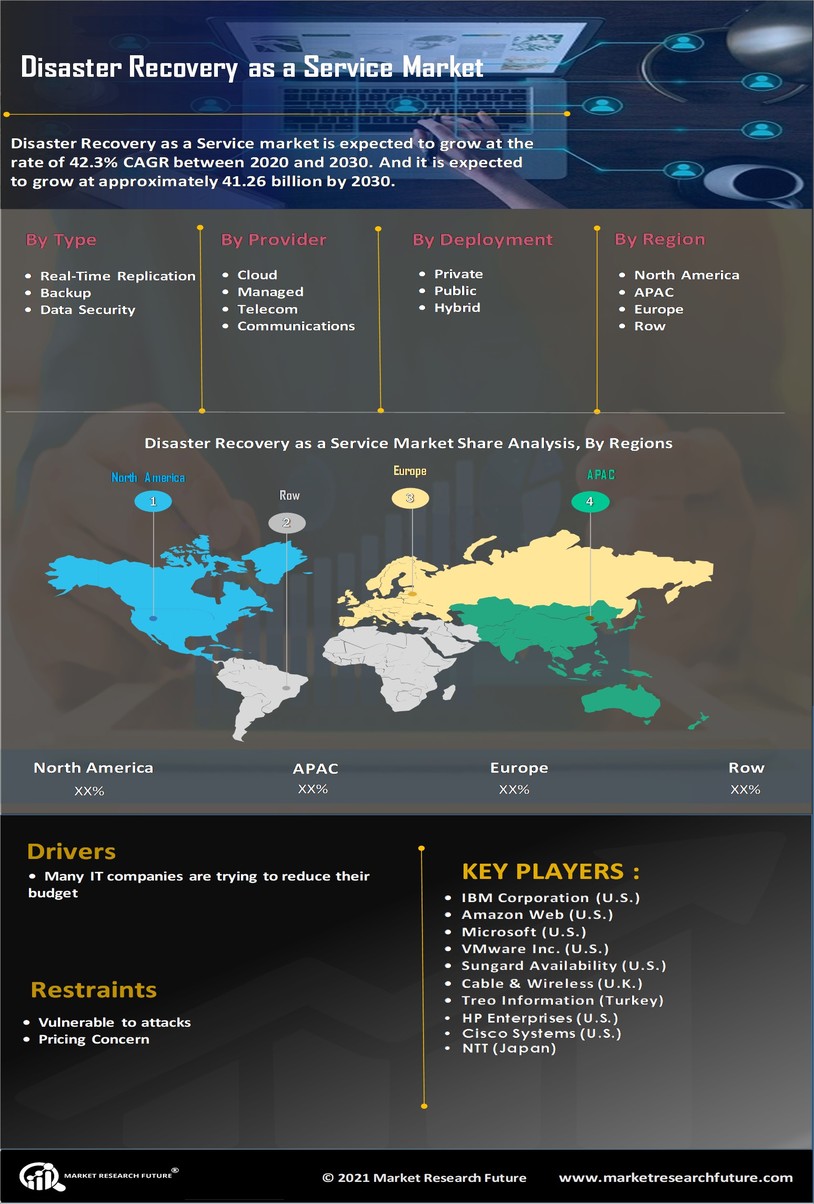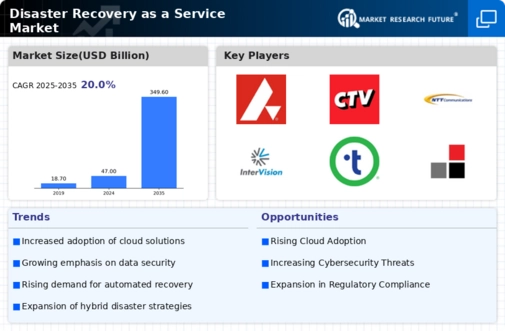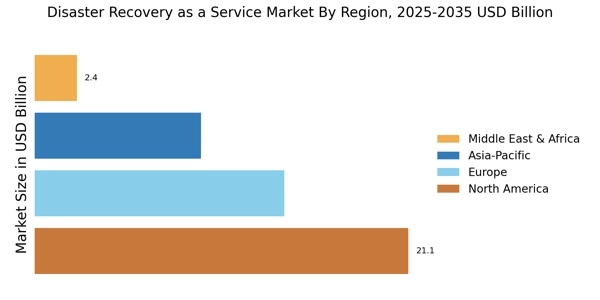Rising Data Volumes
The exponential growth of data generated by organizations is a primary driver for the Disaster Recovery as a Service Market. As businesses increasingly rely on data for decision-making, the need for robust disaster recovery solutions becomes paramount. According to recent estimates, data generation is expected to reach 175 zettabytes by 2025. This surge necessitates scalable and efficient disaster recovery solutions to ensure data integrity and availability. Organizations are recognizing that traditional recovery methods may not suffice, leading to a shift towards cloud-based disaster recovery services. The Disaster Recovery as a Service Market is thus witnessing heightened demand as companies seek to protect their critical data assets against potential disruptions.
Shift Towards Remote Work
The transition to remote work has fundamentally altered the operational landscape for many organizations, driving demand for the Disaster Recovery as a Service Market. As businesses adapt to flexible work arrangements, the reliance on cloud-based solutions has intensified. This shift necessitates reliable disaster recovery services that can support remote operations and ensure data accessibility from various locations. Companies are increasingly recognizing that traditional recovery methods may not be adequate in a remote work environment. Consequently, the Disaster Recovery as a Service Market is witnessing growth as organizations seek solutions that provide seamless access to data and applications, regardless of employee location.
Increased Cybersecurity Threats
The rise in cybersecurity threats is a significant driver for the Disaster Recovery as a Service Market. With cyberattacks becoming more sophisticated and frequent, organizations are compelled to adopt proactive measures to safeguard their data. Ransomware attacks, in particular, have surged, with reports indicating that the average cost of a ransomware attack can exceed millions of dollars. This alarming trend underscores the necessity for effective disaster recovery solutions that can quickly restore operations after an attack. The Disaster Recovery as a Service Market is thus experiencing increased interest as businesses seek to implement robust recovery strategies that mitigate the impact of cyber threats and ensure business continuity.
Regulatory Compliance Requirements
The stringent regulatory landscape across various sectors is propelling the Disaster Recovery as a Service Market. Organizations are increasingly mandated to comply with regulations that require data protection and recovery plans. For instance, regulations such as GDPR and HIPAA impose strict guidelines on data handling and recovery processes. Failure to comply can result in severe penalties, prompting businesses to invest in comprehensive disaster recovery solutions. The Disaster Recovery as a Service Market is responding to this need by offering services that not only ensure compliance but also enhance overall data security. As regulatory scrutiny intensifies, the demand for disaster recovery services is likely to grow, positioning the industry for sustained expansion.
Technological Advancements in Cloud Services
Technological advancements in cloud services are significantly influencing the Disaster Recovery as a Service Market. Innovations such as artificial intelligence and machine learning are enhancing the capabilities of disaster recovery solutions, enabling faster recovery times and improved data management. These advancements allow organizations to automate recovery processes, reducing the time and effort required to restore operations after a disruption. As businesses increasingly adopt cloud technologies, the demand for sophisticated disaster recovery services is likely to rise. The Disaster Recovery as a Service Market is thus positioned to benefit from these technological trends, offering solutions that align with the evolving needs of modern enterprises.


















Leave a Comment